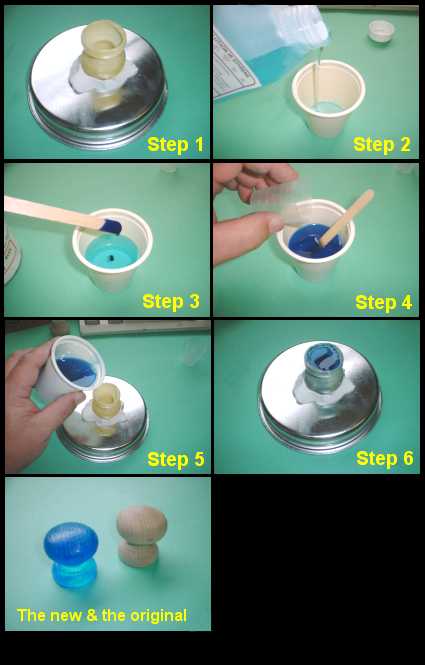These
notes are given in good faith for general guidance purposes
Other help sheets & tips are available via the
instructions & guides link above.
| This tutorial page
shows the basic procedure for casting objects in moulds, in this case we
are casting a transparent blue doorknob from the latex mould made in the
Latex mould process tutorial. To
print this page right click your mouse here select all then choose print
from your browser toolbar. To enhance this tutorial please read our notes on small resin castings HERE |
|
| Step 1. To ensure your mould doesn't fall over during the casting process, secure your mould to a base, using Plasticene Step 2. Carefully pour out required amount of resin to completely fill the mould (allow small amount extra, better to be too much than not enough). Step 3. Mix the pigment thoroughly into the resin (if you are filling the resin with powders this is the stage to add them). Step 4. After carefully measuring the correct amount of catalyst (1 to 2%) stir into resin completely, minimum workshop temperature 16ºC. Step 5. SLOWLY pour catalysed resin mixture into the mould (remember to do this as slowly as possible to reduce the risk of introducing unwanted air into the casting. Step 6. Allow casting to cure (approx 4 hours in normal room temperature 25º C). Pure resin castings can be quite brittle so take care when affixing them, using an epoxy adhesive or similar. Resin part filled with mineral powder is opaque but can still be pigmented and is tougher, with care it can be drilled and tapped if required. Note: Achieving a glass clear surface using latex moulds can be quite difficult, best results are achieved when the resin is filled with mineral powders etc. |
 |
| A tutorial of how the
latex mould was made is available here Please read our notes on small resin castings HERE
These notes are given in good faith for general
guidance purposes
|
|
/html>